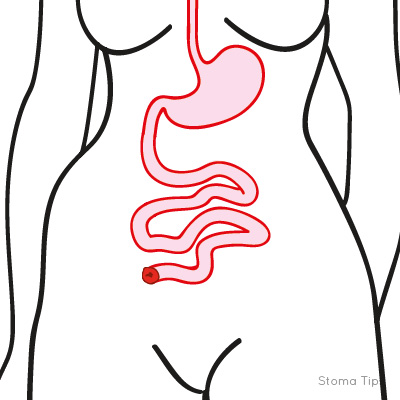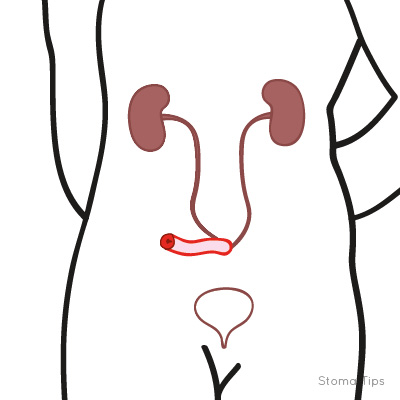Whether you call it an appliance, a pouch or a bag, an ostomate’s pouching system is essential, and having the correct one for your needs is the best way to make sure your stoma is safe and secure. There is a wealth of stoma pouches available on prescription, and finding the right one for you can help you adapt mentally and physically to life with a stoma. There are a number of things to consider when picking the right product for your lifestyle and your stoma, and this articles seeks to lay them out clearly.

Closed or drainable
A closed pouch is completely sealed and cannot be emptied. It is intended to be used only once. When it is time for a change, usually when the pouch is half full, it must be discarded and replaced. This can be a quick and convenient process.
A drainable pouch, on the other hand, has an outlet that allows it to be emptied without being entirely removed. This means these pouches are reusable, which is ideal for stomas with a higher volume of output, although for hygiene and good skin health they should be completely replaced at regular intervals. This could be daily or every 2–3 days.
Most drainable pouches come with an integrated closure or clip, which is typically very simple to use and more discreet under clothes, as well as impossible to drop or lose. There are some that need to be sealed with a separate clip.
Drainable pouches that are designed for a urostomy, the outlet takes the form of a tap, closed with a twist- or bung-type cap. All urostomy pouches have a non-return valve, which prevents the urine from washing back over the stoma; this is especially important when lying down to stop the output finding its way back to the kidneys ad potentially leading to a urine or kidney infection.
Types of stoma
Different pouches are designed for different types of stomas, depending on the consistency of the output, and it is important to pick one that matches skin, output and desired pouch wear time.

Colostomy – The output of a colostomy tends to be formed or semi-formed. A colostomy is likely to work one to three times a day, and the output it typically too thick to be drained from the pouch. However, colostomates with a shorter bowel (ascending or transverse colon) and those on certain medications (such as chemotherapy drugs) may have looser output and benefit from a drainable pouch.

Ileostomy – As an ileostomy’s output does not get a chance to thicken in the large bowel, it will be looser and more liquid (non-formed). It is likely to produce a larger volume of output compared with a colostomy, but it tends to be loose enough to drain without removing the entire pouch. A jejunostomy is similar to an ileostomy, but involves a shorter length of bowel, and the output is often higher than an ileostomy due to it being positioned higher in the bowel.

Urostomy – A urostomy produces urine, which is completely liquid. As the body produces a lot of urine, a urostomy pouch will fill fairly quickly, but the tap or outlet allows it to be drained without removing the pouch.
Night drainage
Urostomy pouches can be attached to a night drainage system. This sits near the bed and can hold a large volume of output, preventing the pouch from filling up and dragging overnight, contributing to a good night’s sleep. Many urostomates choose to change their night bags weekly and rinse them with water each morning.
Be aware that, although some companies use a universal connector that will work between a wide range of pouches and systems, others will use individual connectors that only work with the same company’s products.
One-piece or two-piece
Pouches are available as one-piece or two-piece systems, which, as the name implies, come in either one or two pieces. All ostomy pouches have a flange, the part that sticks to the body. One-piece systems have an integral flange that is permanently attached to the pouch itself. Meanwhile, in a two-piece system, the flange takes the form of a separate baseplate, meaning pouches can be taken on and off (with either a clipping or sticking together mechanism), while the baseplate remains on the body.
Removing a pouch many times a day may irritate the skin, so two-piece systems are ideal for ostomates who need to remove their pouch more regularly. On the other hand, some people find a one-piece pouch more flexible, and it makes it possible to completely clean the skin each time a pouch is changed.

Two-piece system
Colour
Ostomy pouches are typically opaque beige in colour. If you want to change up the look of your pouch, there are a range of fabric covers available in different colours and designs.
There are also transparent pouches made out of a clear material that allows the stoma and output to be seen, which is especially useful if you want to see what’s going on. Providing the best of both worlds, there are also split-film soft cover pouches with an opaque cover over a transparent pouch, which allow viewing without the stoma and its contents being on constant display.
Aperture size
When it comes to your pouch, it is very important that the hole (aperture) fits around your stoma snugly. Too small an aperture can damage the stoma, while too large a hole can lead to leaks, which can cause odour and harm the surrounding skin.
Your stoma is likely to change in size and shape over time. Cut-to-fit pouches are marked so that you can cut an aperture of the right size using a template and curved scissors. After an operation, a stoma can be very swollen, and as the bowel settles it can become smaller. For the first 6–8 weeks, the stoma should be checked regularly and the template adjusted accordingly.
Once your stoma has settled and stays a relatively stable size, it can be more convenient to order pre-cut pouches or pouches cut to your template, saving you the hassle of cutting the apertures yourself. If you experience problems with leaks; if you lose or gain weight; or if you develop a hernia or other changes to your stoma or tummy, then you will need to have your stoma remeasured. Don’t be afraid to ask your stoma care nurse for help.
Material
There are a range of adhesive skin barriers available in both one and two-piece systems to suit most people’s skin type and stoma effluent. Good skin health is very important for any ostomate and recent developments include infused skin barriers with products such as ceramide, aloe vera, vitamin E and Manuka honey that can help maintain the health of the individuals’ skin. Most skin barriers comprise of a hydrocolloid type adhesive, which is considered to be hypoallergenic.
Convexity
Stomas are ideally spouted from the skin, which allows them to stick out a little way into the pouch. However, some stomas are unspouted and flush against the skin, or even retracted below skin level, which makes it difficult to attach a pouch without the output touching and damaging the skin. If this describes your stoma and you are experiencing persistent leakage, you can be prescribed a convex pouch, which will have a convex flange shaped to push into the surrounding skin and help spout the stoma.
Convex versions are available (closed or drainable, including urostomy) one- or two-piece system for all stoma types. There are varying depths of convexity to help suit the needs of the individual. However, it is important to be careful when choosing convex pouches, and they should only be used on recommendation of a stoma care nurse, who is able to ensure correct use of the product. This is because convexity can potentially cause bruising or pressure ulcers. If you experience these, they should be discussed promptly with the stoma nurse.

Convex pouches
References
Black P. Holistic stoma care. London: Bailliere Tindall; 2000
Burch J, editor. Stoma care. Chichester: Wiley; 2013
Burch J. The pre- and postoperative nursing care for patients with a stoma. Br J Nurs. 2005; 14(6):310–8
Conclusion
It might take some time and trying several companies before you find the best pouching system for you. Remaining in contact with your stoma care nurse is vital to make this process as easy and fruitful as possible. It is worth persevering, as, once you have the right appliance, it can make a huge difference to your health, self-esteem and general wellbeing.
Jo Sica is a Stoma Care Nurse at Hollister
The contents of this page are property of MA Healthcare and should not be reused without permission


